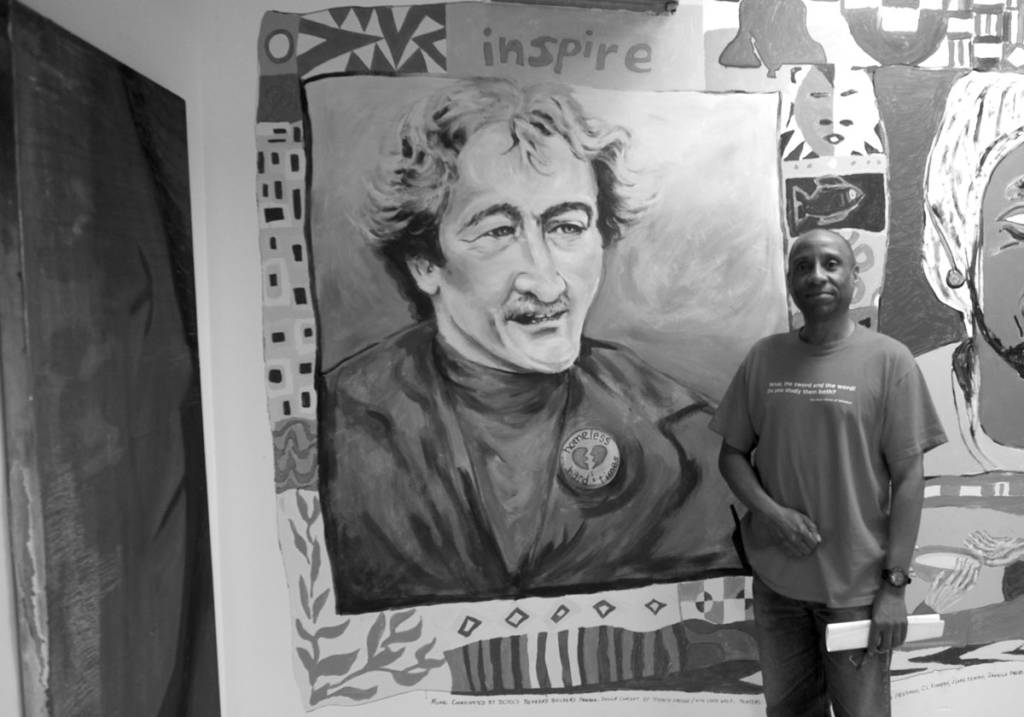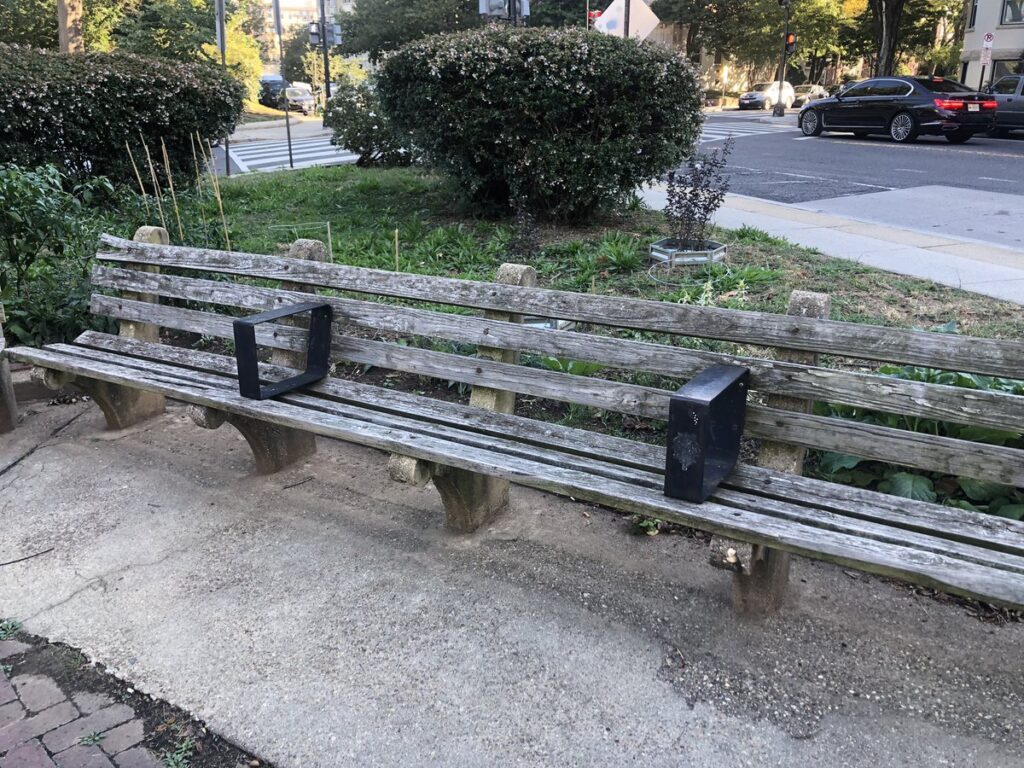On June 6, 1986, the Reagan administration gave the former Federal City College building over to a group of activists and people experiencing homelessness. Under the 99th Congress of the United States, H.R. 4784 transferred jurisdiction of 425 Second Street NW to the District of Columbia. D.C. voters then passed a referendum with a 72 percent majority vote that gave rise to the Federal City Shelter.
Currently, the 3-story 70-year-old building houses 1,350 beds for the homeless, offices of the Community for Creative Non-violence (CCNV), and numerous other services that include Unity Health Care and DC Central Kitchen, making it the largest homeless facility of its kind in the nation.
The Federal City Shelter has been a topic of discussion in recent years, as the building will resort back to the city’s jurisdiction under the terms of a quitclaim deed that granted CCNV the property for 30 years so long as it was used to benefit the public through services for the homeless.
Donald Page, Treasurer and Director of the Administrate Offices at CCNV, told Street Sense that the Federal City Shelter was not at risk, and would remain in operation well past the supposed July 2016 lease expiration. CCNV and the District of Columbia are in the midst of negotiations that Page stated he was not at liberty to discuss.
“I can reassure you that the building is not shutting down next year, or the year after next,” said Page. “In a way we are saving the city a lot of money. The need for CCNV is not going away anytime soon, so in one way or another, we will still be here and we will still be providing homeless services.”
Stephen Campbell, Senior Planner for the Department of General Services, confirmed that CCNV will continue well past 2016. Campbell assured Street Sense that the city has not abandoned the Statement of Principals that was developed by a special taskforce appointed to discuss the future of CCNV and the Federal City Shelter. The taskforce recommended that any replacement to the Federal City Shelter should strive for the original capacity and be located on the same site; in addition, the construction of any new facility should be completed before demolition of the existing structure. Campbell said the agency recognizes the need for the continuity of shelter for Federal City Shelter residents.
Page expressed a belief that maintaining homeless services in the heart of the city is imperative to aiding people who are homeless. The location of the Federal City Shelter provides its residents with close proximity to transportation and employment opportunities. Page emphasized that the location also provides city officials with a reminder of the presence of homelessness and the escalating class divide in the district.
“It’s a nice constant reminder to the powers that be, that homelessness still exists and you can’t shovel it off to the outskirts of the city,” said Page. “The problem is still here, and what are [city officials] going to do about it besides giving out platitudes?”
The successful creation of the Federal City Shelter in 1986 was due in large part to the efforts of activist and CCNV spokesperson Mitch Snyder. Snyder died July 3, 1990. It’s been 25 years since the zealot took his own life in the shelter he helped build.
Snyder had a long and colorful background with homeless people living in D.C., often choosing drastic measures in order to have his voice heard. He sometimes held street funerals for homeless people who had passed away unsheltered, and often engaged in hunger strikes to get administrative attention. A hunger strike that lasted 51 days ended when President Ronald Reagan gave CCNV a building owned by the federal government to be used as a shelter for 30 years.
Although Snyder had been disheartened by the reduced impact of Initiative 17 (a ballot initiative that would have continued to guarantee every person an emergency bed in the city) and the dissolution of his long time relationship with a fellow activist, Carol Fennelly, those close to Snyder believed he would bounce back. His suicide was a shock to all that knew him.
Donald Page, Treasurer and Director of the Administrate Offices at CCNV, stated that CCNV did not commemorate Snyder’s death, and that people who knew him believe that is how he would have wanted it.
Though CCNV did not commemorate Snyder’s death, on July 11, Pep Rally for Peace in the Streets (PRPIS) held the 10th annual Feed the Homeless Community Awareness Day in memory of Snyder.
“Needless to say, I’ve been inspired myself by Mitch Snyder and the work he did,” Garry Clark Sr., CEO and co-founder of PRPIS, said.
The event on July 11 fed 622 homeless people and focused on health by providing mostly fruits and vegetables from Capital Area Food Bank and Martha’s Table.








